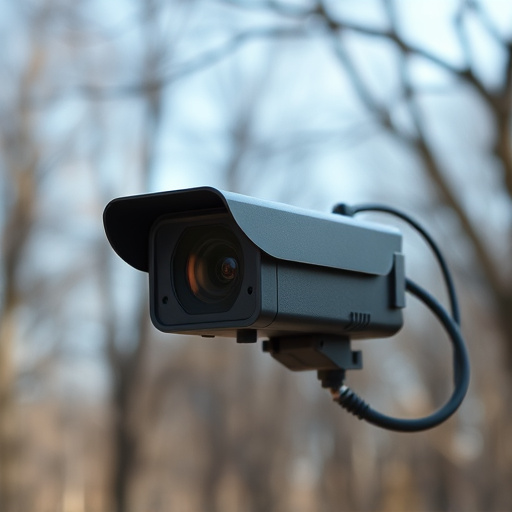Spy camera glint detection is a cutting-edge solution that identifies covert filming devices with remote access by analyzing light reflections. Utilizing advanced algorithms and low-light imaging, this technology ensures privacy and safety in the digital age, especially crucial for nighttime surveillance. Night-time glint detection relies on specialized sensors like thermal imaging cameras, capturing multiple frames to differentiate between genuine glints and other light sources. Spy cameras with remote viewing capabilities have revolutionized security, offering live video feeds via smartphones or computers, making them invaluable for monitoring activities from afar in various sectors such as law enforcement, wildlife conservation, and industrial inspections.
Uncover the secrets of night-time surveillance with our in-depth exploration of spy camera glint detection methods. In today’s digital age, privacy is paramount, making remote viewing technology a game-changer. This article delves into the intricate process of identifying hidden cameras through their unique lens glints, offering a comprehensive guide for professionals and tech enthusiasts alike. From understanding the basics to uncovering technical nuances, we’ll explore how spy camera with remote viewing can enhance security and foster peace of mind in various settings.
- Understanding Spy Camera Glint Detection
- The Night-Time Glint Detection Process
- Technical Aspects of the Method
- Benefits and Applications of Remote Viewing Technology
Understanding Spy Camera Glint Detection
In the realm of surveillance and security, spy camera glint detection has emerged as a critical method for identifying hidden or illegally installed cameras, especially those with remote viewing capabilities. The process involves advanced imaging techniques and software to analyze light reflections on surfaces, known as glints, which can indicate the presence of a hidden lens. By understanding the subtle patterns of these glints, security professionals can locate and neutralize spy cameras in various environments, ensuring privacy and safety.
This technology is particularly useful for individuals seeking protection against covert surveillance using spy cameras with remote viewing features. It enables them to proactively detect and dismantle such devices, making it a powerful tool in today’s digital era where privacy concerns are on the rise. With the ability to pinpoint hidden lenses through glint analysis, users can take measures to safeguard their personal and professional spaces from unwanted intrusion.
The Night-Time Glint Detection Process
The Night-Time Glint Detection process involves a sophisticated combination of advanced algorithms and sensor technology designed to identify and mitigate the reflection of light sources, commonly known as glints, that can compromise the security and privacy offered by spy cameras with remote viewing capabilities. This method leverages low-light imaging techniques to analyze pixel data at incredibly fast speeds, allowing for the early detection of even subtle glints. By continuously scanning and processing images, the system can accurately pinpoint the source of the reflection, whether it originates from a nearby window, street lamp, or any other external light source.
Once detected, these glints are either filtered out or masked to prevent their appearance in the final video feed. This ensures that sensitive information captured by the spy camera remains secure and unrevealed, even under low-light conditions. The efficiency of this process is particularly crucial for nighttime surveillance, where the absence of ambient light can magnify the impact of glints, potentially compromising the entire operation.
Technical Aspects of the Method
The method for detecting a camera lens glint at night involves a blend of sophisticated image processing and advanced sensors. By utilizing specialized equipment, such as thermal imaging cameras or low-light capable sensors, the system is able to pick up on subtle visual cues that might otherwise go unnoticed. These tools are crucial in identifying the characteristic reflection from a hidden spy camera lens, known for its distinct glint, even under low light conditions.
The process begins with capturing multiple frames at rapid intervals, allowing for detailed analysis of fleeting reflections. Through advanced image processing algorithms, the system distinguishes between genuine glints and other potential sources of light, like ambient reflections or environmental lighting. This is where remote viewing comes into play; operators can remotely monitor and adjust settings to optimize detection, ensuring that even the smallest glint from a spy camera with remote viewing capabilities doesn’t go undetected.
Benefits and Applications of Remote Viewing Technology
The advent of remote viewing technology has revolutionized surveillance and security, offering unprecedented benefits for both professional and personal use. One of the most innovative applications is found in spy camera with remote viewing capabilities. These devices enable users to monitor activities from a distance, providing real-time video feeds accessible via smartphone or computer. This feature is particularly useful in scenarios where direct observation is impractical or dangerous, such as monitoring remote locations, securing valuable assets, or enhancing home security.
By employing remote viewing technology, individuals and organizations can achieve enhanced situational awareness, deter potential threats, and swiftly respond to critical situations. The ability to remotely access live video feeds allows for quick decision-making and efficient resource allocation. Moreover, this technology finds application in various fields, including law enforcement, home monitoring, wildlife conservation, and even industrial inspections, making it a versatile tool with far-reaching implications.
In conclusion, the detection of camera lens glints at night using remote viewing technology offers a cutting-edge solution for identifying hidden spy cameras. By leveraging advanced algorithms and image analysis techniques, this method revolutionizes privacy protection in today’s digital era. The benefits are clear: enhanced security, reduced risk of surveillance, and a game-changer for navigating the labyrinthine world of covert photography. With these advancements, individuals can now rest easier knowing that their activities are less likely to be captured by unseen spy cameras, ensuring a safer and more secure environment.
